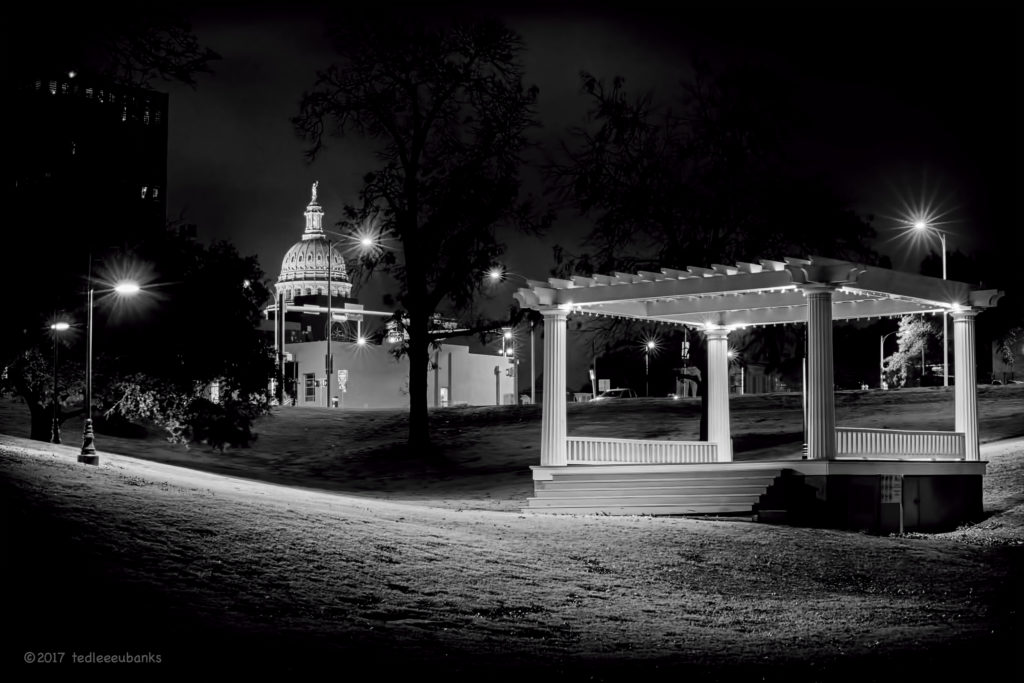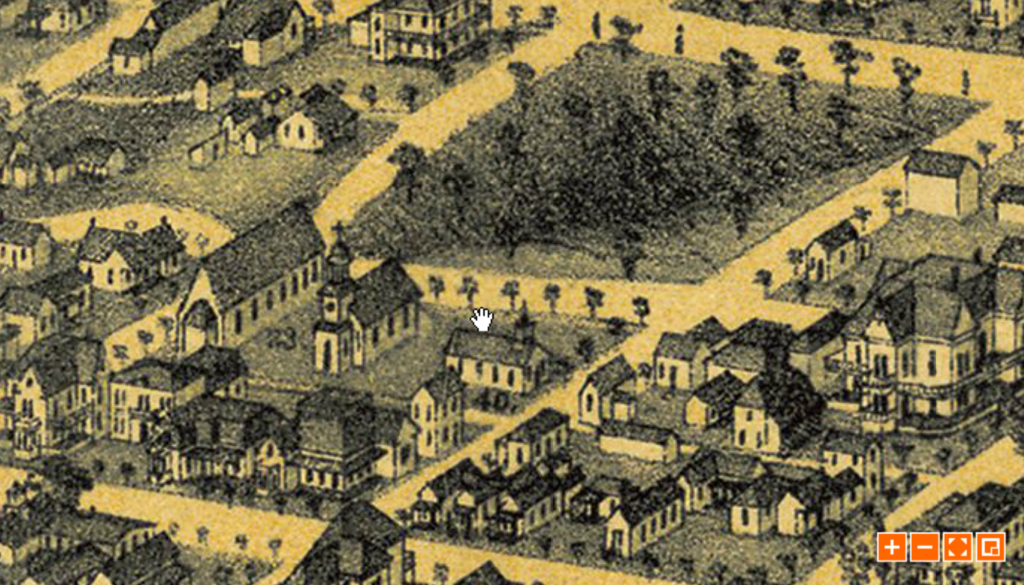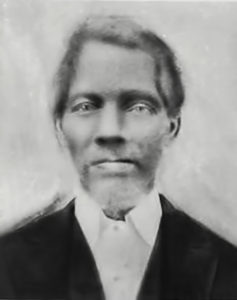
The Austin History Center (AHC) occupies the 1933 Austin public library building overlooking Wooldridge Square. The library moved next door to the John Henry Faulk building in 1979, and freed the space for the AHC. All of this I know. This is common knowledge.
But, what came before? What happened during that century between Austin’s founding and the construction of this building? What isn’t commonly known? What past hides behind the facade of the present?
Edwin Waller set aside this block for churches in the original 1839 plan for Austin. The AHC has a reference to three churches on this site but little else. The AHC website says that “the land on which our building now stands was originally designated for church use and three churches once stood on this lot.” But, which churches? What were their names? Who were the members?
My search started with Augustus Koch’s 1887 Bird’s-eye View Map of Austin. The map shows three churches in this block, and two are named in the legend: Metropolitan A. M. E. Church (#28), First Baptist (col’d) Church (#40).

The Metropolitan African Methodist Episcopal (AME) Church was established in 1870 at the corner of San Antonio and West 9th, Lot 1, in Block 101. The first pastor of the church was Minister Frank Green. The church, still in existence, is now located at 1101 East 10th Street. Metropolitan is one of the oldest AME churches in Texas, and AME is the oldest independent Protestant denomination founded by black people in the world.
Paul Quinn College, currently in Dallas, was established at the same location by Metropolitan AME in 1872. The college would move to Waco, then to Dallas, from its origins in Austin. The college was called the Connectional High School and Institute at its founding. The school’s original purpose was to educate freedmen and their children. Paul Quinn College is the oldest historically black college west of the Mississippi River.
The second church, the First Baptist Church (col’d), was located at the corner of West 9th at Guadalupe (the other end of the block from Metropolitan). Austin deeded the land to First Baptist in 1869. The First Baptist Church still exists in East Austin and is located at 4805 Heflin Lane.

This church was organized by one of Austin’s earliest and most renowned African-Americans, Rev. Jacob Fontaine. According to The Handbook of Texas, “the Fontaine family lived on the Woodlawn plantation near the Austin home of ex-governor Elisha M. Pease. Jacob’s wife Melvina (Viney) was a housekeeper there and had cooked at the Governor’s Mansion….” The Woodlawn Plantation, is now, in part, Pease Park.
Rev. Fontaine established the first African-American newspaper in Austin, the Austin Gold Dollar, and helped organize the Sweet Home Missionary Baptist Church in Clarksville in 1877.
Wooldridge Square and the surrounding blocks attracted other religions, as well. One of the first synagogues in Austin began in September 1876 when a group of Austin Jews met in the mayor’s office to organize Congregation Beth Israel. Chartered by the State of Texas in 1879, the congregation built its first house of worship in 1884 on the corner of West 11th and San Jacinto. Henry Hirschfeld was elected its first president. The Hirshfield Home and Cottage, now the property of Texas A&M University, is directly southeast of Wooldridge Square on West 9th.
History that is unspoken is history that is forgotten. History is erased through acts of omission as well as commission. Inadvertent or purposeful, history that is lost is soon replaced with a new narrative, a new meaning, for our place on this planet.
Interpretation strives to resurrect these lost histories and return them to the public domain where they can be discussed and examined freely by the general public. Why? Freeman Tilden, quoting an anonymous U.S. National Park Service ranger a half century ago in Interpreting Our Heritage, offered one of the most compelling explanations:
Through interpretation, understanding; through understanding, appreciation; through appreciation, protection.